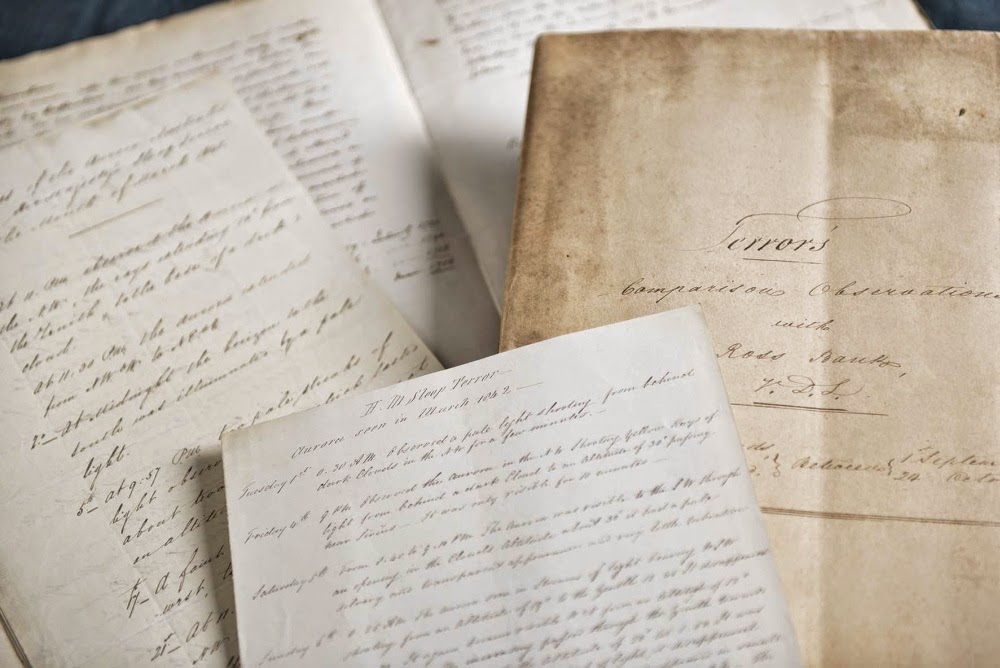Friday, 5 December 2014
On the manufacture of gun-flints, Memoir of the Geological Survey 1879.
Title page of: Memoir Geological Survey. England and Wales. On the manufacture of gun-flints, the method of excavating for flint, the age of Palaeolithic Man and the connexion between Neolithic art and the gun-flint trade by Sydney B.J. Skertchly. London : HMSO, 1879. The memoir is an exhaustive account of the making of gun-flints at Brandon in Sussex.
The memoir is a regarded as a classic by modern day flint knappers.
Sample page showing descriptions of the thirty-three gun-flints that were available at the time. The gun-flints had interesting names such as Mixed Grey or Spotted Horse Pistol, Chalk-heeled Horse Pistol, Best Carbine, Solid Grey Musket etc. They were all made by eye, no measurements were involved.
Illustration showing knappers at work. Flint was mined from chalk pits, each pit lasting from six to nine months. The miners sold the flints to the flint knappers by the 'jag' which is one cart-load about equal to a ton.
To manufacture the gun-flints there were four processes:
Drying - flint would be dried outside in the summer but in the winter it was dryed around the fire indoors.
Quartering - a block of stone is taken and quartered - they may weigh a quarter of a hundredweight to two hundredweights.
Flaking - The most difficult process and requires great skill and 'nicety of judgement'.
Knapping - The final process of forming the flakes into gun-flints. A good flake will make four, and a very good one five flints. An average workman will knap 3,000 flints in a day of 12 hours. One man working from 4 a.m. until 11 p.m. made 24,000 in a week!
Illustration showing how a flint fractures to provide a series of flakes. Just one stage in the process of making gun-flints.
Watch a video on flint mining and knapping at Brandon in the 1930s and 1940s here and here. Definitely worth watching!
Posted by Bob McIntosh
Friday, 14 November 2014
Flints from Piltdown, Sussex
These flints were found in a gravel pit at Piltdown in Sussex by Charles Dawson (1864-1916), a local solicitor and amateur archaeologist. The gravel pit was the same one in which the now infamous Piltdown Man was discovered. It is widely believed that Dawson was responsible for this audacious fraud.
BGS has a Piltdown Forgery webpage and timeline which can be accessed here
Andrew L Morrison
 |
| BGS image ID: P903735 |
 |
| BGS image ID: P903736 |
 |
| BGS Image ID: P903738 |
BGS has a Piltdown Forgery webpage and timeline which can be accessed here
Andrew L Morrison
Monday, 3 November 2014
Penmaenmawr Mountain Top Quarry
 |
| BGS Image ID: P539567 |
Penmaenmawr Mountain Top Quarry. Conveyors down to loading pier.
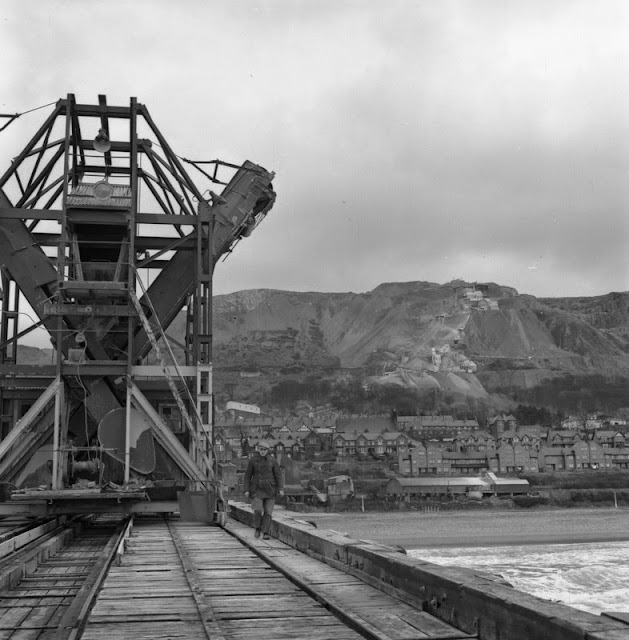 |
| BGS Image ID: P539617 |
Ship loading jetty - some of output went by boat to London.
 |
| BGS Image ID: P539574 |
Drilling shot holes.
Images from the Hugh O'Neill collection. Photographs taken c 1960-61.
Posted by: Bob McIntosh
Monday, 20 October 2014
English churches - building stones
 |
| BGS Image ID: P209976 |
 |
| BGS Image ID: P210728 |
 |
| BGS Image ID: P210855 |
Posted by Bob McIntosh
Tuesday, 7 October 2014
BGS maps portal — maps and sections 1832 to 2014
![Sheet 10 [Isle of Wight, Lyrnington, part of Portsmouth Harbour.] Geological Survey of England and Wales Old Series. 1:63,360. 1856. Sheet 10 [Isle of Wight, Lyrnington, part of Portsmouth Harbour.] Geological Survey of England and Wales Old Series. 1:63,360. 1856.](https://blogger.googleusercontent.com/img/b/R29vZ2xl/AVvXsEgSmzc5PZXzq8HODpp2K2tdEOix3NOdtitpnUcyZees2M0yF0fESKAtEwBPhpYKf1veDtBFLj_QybAtzxtx8Nw3k51V2ebzOqKCiFmumxjXVh5fkFVxmQLe_ZJ8Mg6nXVAAUjwaX3UGUPM/s640/Wight185.JPG) |
| Sheet 10 [Isle of Wight, Lyrnington, part of Portsmouth Harbour.] Geological Survey of England and Wales Old Series. 1:63,360. 1856. |
Two sheets separated by 157 years. Both available as high resolution scans on the new BGS Maps Portal  |
| Isle of Wight special sheet. Geological Survey of England and Wales 1:50,000 map. 2013 |
The British Geological Survey (BGS) has released high resolution scans of over 6000 geological maps which were previously published on paper. The “BGS Maps Portal” provides free to view small and medium scale maps produced by the BGS since geological mapping began in 1832. The Maps Portal includes the recent 1:50,000 mapping of England, Wales and Scotland, geochemical and geophysical maps and also the historical maps that were in the former BGS historical maps website.
Posted by Bob McIntosh
Thursday, 18 September 2014
Franklin's Ships: Records from HMS Erebus and HMS Terror
‘Term day books’ from HMS Erebus and HMS Terror, 1840-1842, containing both magnetic and meteorological observations.
Sir John Franklin’s fabled lost expedition, back in the news last week after one of the ships was found by Canadian search vessels, was not the first time that the two ships HMS Erebus and HMS Terror set sail together on a voyage of exploration. Six years before Erebus and Terror departed England for the Arctic, they were beginning a four year expedition that would take them southwards to the Antarctic. On that journey they were led by Captain James Clark Ross, an experienced polar explorer, with the second in command (and commander of HMS Terror) being Francis Crozier. Crozier was captain of the same ship on Franklin’s expedition, and is reported to have taken charge after Franklin’s death, with some suggestions that he survived for several years afterwards.
One of the aims of both Ross’s Antarctic expedition and Franklin’s Arctic one was to collect magnetic data, and the data relating to the Antarctic can still be found in BGS’s collections today. Both HMS Erebus and HMS Terror recorded information relating to the earth’s magnetic field, as well as making meteorological observations such as details of aurora sightings. BGS holds similar records of many other Royal Navy ships, with data collected around the world throughout the nineteenth and early twentieth centuries. A list of Royal Navy ships’ geomagnetic log books held by BGS can be found here. Records of Ross’s expedition also live on in the names of many Antarctic landmarks – for example the Ross Ice Shelf, Ross Sea, and Ross Island with its two volcanoes Mount Erebus and Mount Terror.
See below for more images of records from HMS Erebus and HMS Terror.Term day book and other papers containing magnetic and meteorological observations from HMS Erebus, 1840-1843. James Ross’s signature can be seen in the centre.
Magnetic observations taken at Auckland Island (to the south of New Zealand), 5th December 1840, and Van Diemen’s Land (now Tasmania), May 1841, from HMS Erebus.
Papers from HMS Terror, 1841-1842. The document on the right compares magnetic observations from HMS Terror with those made at Ross Bank, Tasmania.
Francis Crozier’s signature on a document recording auroras seen from HMS Terror in March 1842.
Labels:
Antarctic,
Arctic,
aurora,
Crozier,
Erebus,
exploration,
Francis Crozier,
Franklin,
Franklin's lost expedition,
geomagnetism,
HMS Erebus,
HMS Terror,
James Clark Ross,
James Ross,
polar exploration,
Ross,
Terror
Monday, 8 September 2014
Forth Road Bridge construction. 50th Anniversary
 |
| BGS image ID: P537923 |
 |
| BGS image ID: P537924 |
 |
| BGS image ID: P537894 |
 |
| BGS image ID: P537898 |
 |
| BGS image ID: P537895 |
Posted by Bob McIntosh
Monday, 25 August 2014
Haematite vein from Eas an Fholaich, near Loch Eilt, west of Fort William
 |
| BGS Imager ID: P527666 |
Part of a haematite vein from Eas an Fholaich, near Loch Eilt, west of Fort William, Invernessshire. British Geological Survey Petrology Collection sample number MC 7446.
Haematite is an iron ore mineral composed of iron oxide. It belongs to the hexagonal crystal system and can occur as stubby black rhombohedral crystals or more commonly massive, granular masses, compact, or soft and earthy. It has a dark cherry streak. There is evidence that haematite in veins has been known in Scotland from a very early date. In the middle of the 18th century haematite was mined at Tomintoul, Pennel Burn in Ayrshire and at Garleton in East Lothian. Iron ores come in many forms from bog iron ores, sedimentary bedded ores, to ore deposits injected as metalliferous intrusions. Haematite is often in the latter category.
Posted by Bob McIntosh
Wednesday, 13 August 2014
Mining subsidence in Ferniehill, Edinburgh, 2000
 |
| BGS Image ID: P100363 |
Download a leaflet explaining the subsidence, by Mike Bowne
 |
| BGS image ID: P100365 |
 |
| BGS image ID: P100398 |
Labels:
collapse,
Edinburgh,
Ferniehill,
limestone,
mine,
mining,
subsidence
Saturday, 2 August 2014
William Smith, Geological section from London to Snowdon, 1819
William Smith: Geological section from London to Snowdon showing the varieties of the strata and the correct altitudes of the hills. Published: London : J. Carey, 1819.
Extract from William Smith's Geological section from London to Snowdon showing the Stonebrash Hills, the Chalk Hills and the intervening Vale of Isis and Vale of Aylesbury.
Extract from William Smith's Geological section from London to Snowdon showing the mountains of North Wales.
The section came with an accompanying 'Legend'.
Posted by Bob McIntosh
Tuesday, 22 July 2014
Letter from Admiralty to Geological Museum, 1917
 |
| BGS Archive Ref: GSM/DR/St/A/20 |
Posters relating to the Survey's contribution to the war effort 1914-1918 can be viewed here
Andrew L Morrison
Sunday, 20 July 2014
Malmesbury Abbey, Wiltshire, Middle Jurassic limestone
 |
| BGS Image ID:P212039 |
Malmesbury Abbey, Malmesbury, Wiltshire. Looking north-east.
Malmesbury Abbey was constructed in the 12th century of pale yellow, oolitic limestone from the Middle Jurassic limestones of the Bath area (Box Ground Stone). Only part of the Abbey now remains intact. The pale yellow oolitic limestones used in the Abbey have proved to be reasonably durable probably because the building is in a rural setting away from the problems caused by the industrial pollution of the last few centuries. A monastery was established on the site in around 676 but this building dated from the 12th century when the building was consecrated in 1180. The south portch is the most natable feature that survives from that period. At one time the abbey had a spire taller than salisbury Cathedral but it fell down some time before the Reformation when Henry VIII dissolved the monastery in 1539. Dissolution of the monastries in the 16th century lead to the stripping, sale and removal of building materials from many monastic buildings such as Malmesbury Abbey.
Date taken: 1977
 |
| BGS Image ID: P212040 |
One of the characteristic features of Norman ecclesiastical architecture is the high quality of the building materials selected and the outstanding workmanship of their masons. The remains of Malmsbury Abbey, now the parish church still preserve examples of this fine craftsmanship in stone. Considered to be one of the most outstanding examples of Norman decorative stone carving in Britain, this doorway in the south porch of the Abbey is carved from oolitic limestone from the Middle Jurassic, Box Ground Quarries near Bath. The limestones generically known as Bath Stones are one of the principal sources of building limestone in the United Kingdom. They were worked from numerous mines in the vicinity of the Bath which now sits upon several kilometres of old stone mine galleries. The limestones are pale to dark yellow in colour and dominantly oolitic though some shelly ragstone beds were also worked.
Posted by Bob McIntosh
Monday, 30 June 2014
PLUMBUM Galaena. Sulphure of Lead; Galena. Plate no. 24. From: Sowerby, James. 1802-1817. British Mineralogy
 |
| BGS Image ID: P704650 |
PLUMBUM Galaena. Sulphure of Lead; Galena. Plate no. 24. From: Sowerby, James. 1802-1817. British Mineralogy: Or Coloured figures intended to elucidate the mineralogy of Great Britain. Plate from vol: 1. page no. 55. Modern name: Galena. Location: Collected found in Derbyshire.
Posted by Bob McIntosh
Sunday, 22 June 2014
Settle Lime, November 1960. The new Priest kilns.
 |
| BGS Image ID: P538126 |
From the Hugh O'Neill collection.
Posted by Bob McIntosh
Sunday, 15 June 2014
Crossing water, E.O. Teale Collection
 |
| BGS Image ID: P776556 |
Crossing a river by bridge, Mbeya, Tanganyika Territory, 1928.
 |
| BGS Image ID: P776485 |
Crossing a river by raft
 |
| BGS Image ID: P776490 |
Crossing a river by precarious footbridge
 |
| BGS Image ID: P776527 |
Wading across a river
Photographs are from the E.O. Teale Collection.
Also see :
River transport by traditional 'dugout' canoe. Gold Coast. 1919
Posted by Bob McIntosh
Sunday, 8 June 2014
Land Rover photographs in the BGS archives
A set of photographs for Land Rover fans!
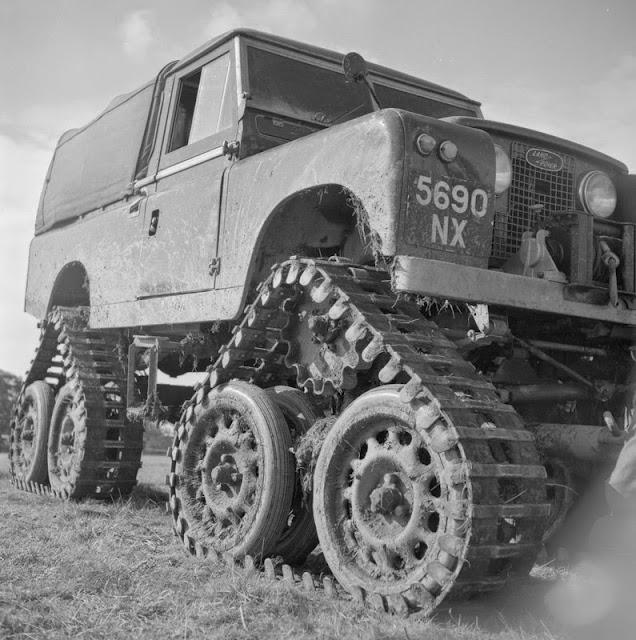 |
| BGS Image ID: P539250 |
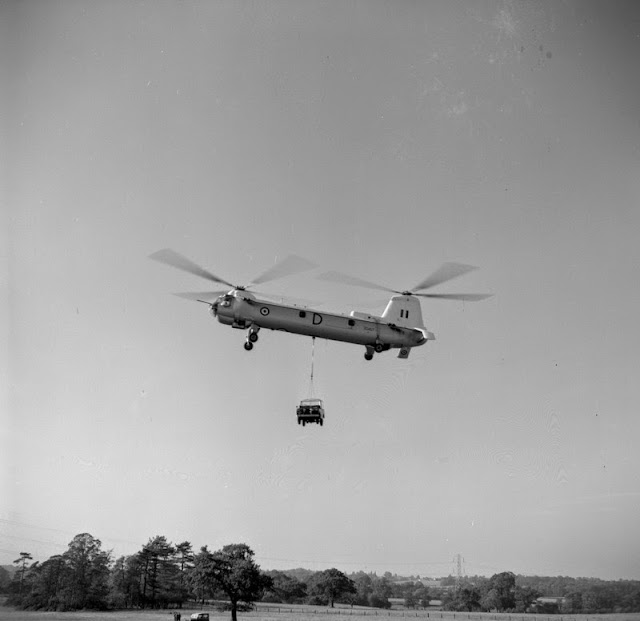 |
| BGS ImageID: P539249 |
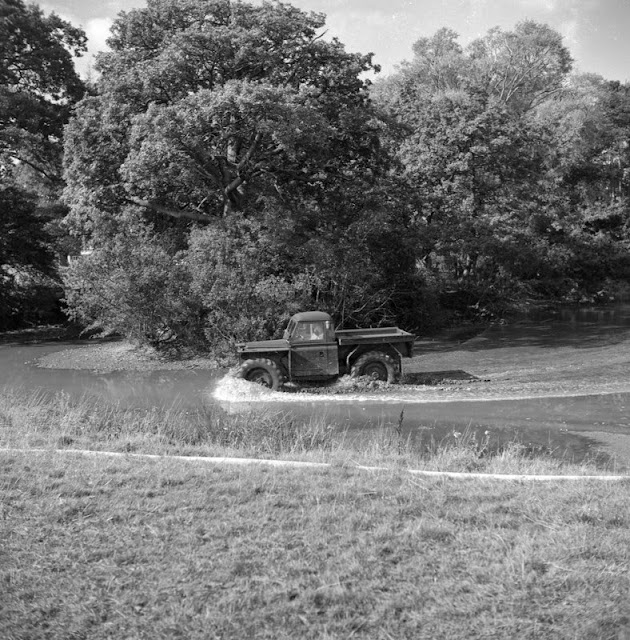 |
| BGS Image ID: P539252 |
 |
| BGS Image ID: P539253 |
 |
| BGS Image ID: P539860 |
 |
| BGS Image ID: P539861 |
Photographs from the Mr. Hugh O'Neill Collection. Most of the photographs in this collection are of quarries in the UK. Dates are c. 1961.
Posted by Bob McIntosh
Sunday, 1 June 2014
Groundwater drilling in Scotland
 |
| BGS Image ID: P001426 |
The rotary drilling rig encountered only dry Permian breccia to 56 m. depth. At this level, a water-bearing fissure suddenly produced a surge of water at the surface. Other fissures were encountered at intervals to 130 m. depth. The final yield of water from the borehole was over 35 litres per second. The borehole is to be used by West of Scotland Water as part of the Dumfries public supply system. The Silurian hills can be seen in the background. These encircle the Permian aquifer in the floor of the basin.
 |
| BGS Image ID: P001434 |
The borehole was drilled by West of Scotland Water as an exercise to see whether groundwater could be used to supply the village of Tarbrax, and replace an unreliable surface stream source. The borehole, drilled into Upper Devonian sandstone and mudstone, yielded over 7 litres/second. The V-notch tank is used to measure the water flow, by comparing the height of water flowing over the V with flow rates in a reference table. The drill rig in the background was used to drill the borehole and install the electric pump to 50 m. depth.
 |
| BGS Image ID: P001440 |
The flow of water was measured at 10 litres/second, which makes it one of the highest naturally-flowing boreholes in Scotland. Most of the water is coming into the borehole at depths between 65 m. and 95 m. below ground level. The quality of the water is very high, and it is hoped that West of Scotland Water will use this source for most of the island's water supply before 2002.
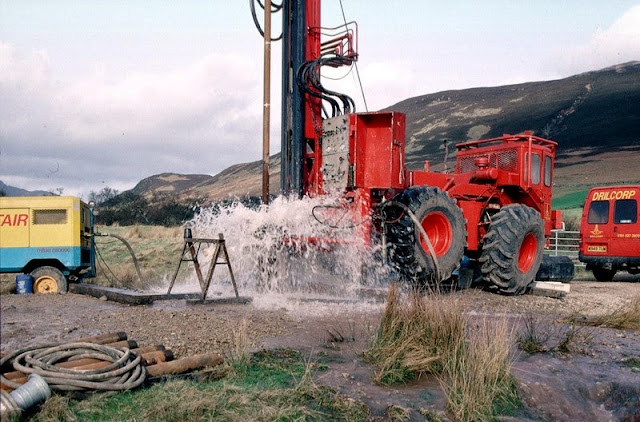 |
| BGS Image ID: P001441 |
The drill rig is located close to the 'String' road from Brodick at a site chosen by the Hydrogeology Group of BGS. The rig is using an air flush hammer to drill through Permian sandstone. The compressor is seen at the left. Compressed air is sent down the drill rods to the hammer at the bottom of the borehole. The air operates the hammer and brings cuttings and water to the surface. The water flows away from the site to a stream. The 4-wheel drive tractor unit powers the rig and is highly maneuverable - useful for sites with problematical access.
Photographs by Derek Ball
Posted: Bob McIntosh
Subscribe to:
Comments (Atom)







